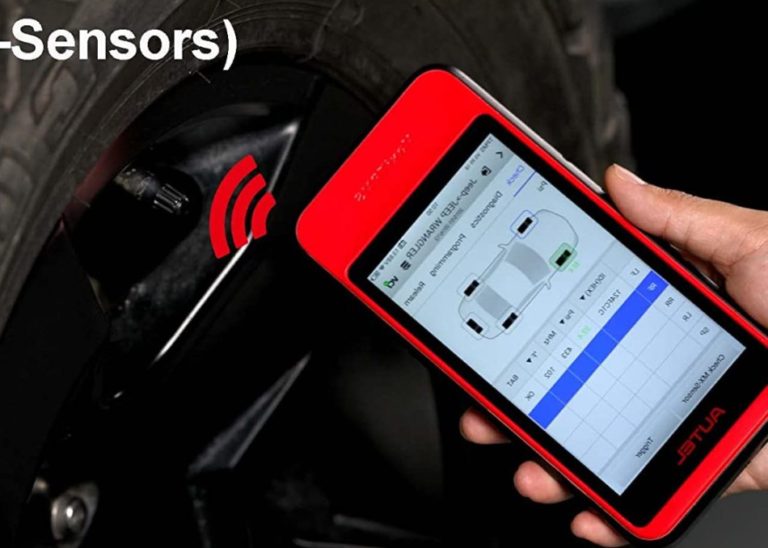The Tire Pressure Monitoring System (TPMS) is a vital safety feature of the 2017 Honda Fit. It ensures that the tires are inflated to the correct pressure. In this article, we’ll explain how the TPMS works, its importance, how to reset it, what sets it off, and how to maintain it.
Types of TPMS
As a driver, keeping your car’s tires in good condition is essential for your safety and fuel efficiency. The TPMS is an electronic system that uses sensors mounted on each wheel to monitor the air pressure in your vehicle’s tires. (located on the inside of the tire at the end of the tire valve) There are two types of TPMS – direct and indirect. The 2017 Honda Fit uses a direct TPMS, which measures the tire pressure directly through sensors mounted on each wheel. Indirect TPMS doesn’t use tire pressure sensors, instead it uses wheel speed sensors to measure tire pressure.
How to Reset Honda Fit TPMS
Start the car or have the ignition to the ON position.
Hold down the TPMS button. (found to the left of the steering wheel under the green ECON button)
The TPMS light on the dashboard will flash twice.
After the tire pressure light stops flashing, release the TPMS button.
Drive the Car!
Before following this procedure, be sure to fill your tires to the correct pressures!
How Does the Honda Fit Tire Pressure Monitoring System Work
When the vehicle is ON or started, the TPMS performs a self-check to ensure that all the sensors are working properly. If there’s an issue with one of the sensors, the driver will be alerted with a flashing yellow warning light on the dashboard. If the tire pressure drops below a certain level, the TPMS will also alert the driver with a warning light on the dashboard. (The threshold for tire tire pressure lights to turn on is usually around 10% of the specified tire pressure) The warning light will remain on until the tire pressure is corrected. Once the tire pressure is corrected, the TPMS will automatically reset itself and perform another self-check to ensure that all the sensors are working properly. If the tire pressure light doesn’t turn off after fixing the tire pressures, use the guide above to reset the tire pressure light.
When to Reset Tire Pressure System:
When you rotate your tires
When you adjust tire pressures
When you replace one or more tires
When you replace the sensors
When you change the wheels or rims
When the TPMS is not functioning properly and needs to be reset manually
When the TPMS warning light comes on and the tire pressure has been corrected.
Common Causes for Tire Pressure Light to Turn On:
Low tire pressure due to a puncture, leak, or gradual loss of pressure over time
Cold weather causing a drop in tire pressure
Overinflated tires
Faulty or damaged TPMS sensors
Battery failure in one or more sensors
Faulty TPMS receiver or wiring issues
Incorrectly programmed TPMS sensors after tire rotation or replacement
Issues with the TPMS computer or software.
Maintain Your TPMS
Maintaining the TPMS is crucial for it to function properly. Checking the tire pressure regularly and inflating the tires to the recommended pressure is essential. I check my tire pressure every week or so but we recommend checking at least once a month or before taking a trip. The recommended tire pressure can be found in the owner’s manual or on a label inside the driver’s side door jamb. If any of the sensors are damaged or worn, they should be replaced immediately.
Functioning TPMS
Properly functioning TPMS is vital for your safety while driving. Underinflated tires can lead to poor handling, reduced fuel efficiency, and even tire failure. Overinflated tires can also cause handling problems and reduce the lifespan of the tires tread. You cannot disable the tire pressure monitoring system in any of the Honda vehicles. It’s a mandatory safety feature. If you remove a TPMS sensor or receiver, the tire pressure light will flash until the system is back to OEM specifications.
Conclusion
In conclusion, the TPMS is a safety feature that you should pay close attention to. It uses sensors to monitor the air pressure in your car’s tires and alerts you if there are any issues. Regular maintenance of the TPMS is essential to keep it working correctly. Check the tire pressure regularly and replace any damaged or faulty sensors. In case the TPMS warning light comes on, check the tire pressure as soon as possible, inflate the tires to the recommended pressure, and if the light remains on, reset the tire pressure light. If the light is flashing or won’t reset, you likely have a faulty tire pressure sensor. Use a TPMS tool like this or bring your car to a mechanic to find out which sensor is faulty!
Please note that this blog post contains Amazon affiliate links. This means that if you make a purchase through one of these links, the author of the blog may earn a small commission at no extra cost to you. The author only recommends products that they personally use and believe in. Thank you for supporting this blog.



